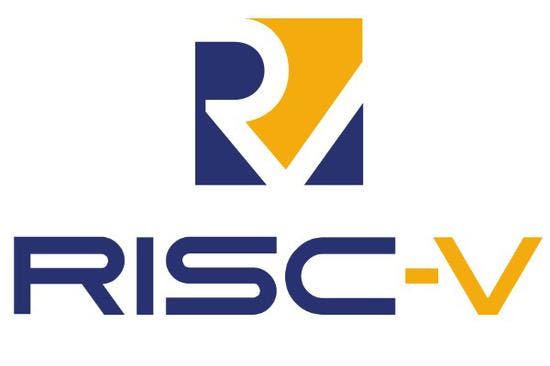The appeal of RISC-V has peaked.
- SiFive, the RISC-V chip designer is selling its OpenFive services business including some of its designs to Alphawave IP in what I think is a good example of perfect timing as interest in RISC-V has just peaked.
- RISC-V is an open-source semiconductor architecture that competes directly with Arm and allows users to build chips that lie outside of the Arm ecosystem.
- RISC-V is typical of many open-source offerings in that you get what you pay for which in the case of the RISC-V IP, is not very much.
- Hence, to make a processor, a lot of work is required to build on top of the IP which is where SiFive comes in.
- In many ways, SiFive is much like Arm except that it does not own the core IP that it bases its processors on unlike Arm.
- Historically, RISC-V has seen traction at the very low-end of the microprocessor market which has volume but very little value.
- SiFive recently announced that it was moving into the higher-end of processor design when it announced 2 new processor cores that were aimed at consumer applications.
- SiFive has the support of Intel for these processors and customers will be able to manufacture chips on Intel’s equivalent of TSMC’s 5nm.
- SiFive’s deal to sell its OpenFive services business and some designs for $210m looks like a recognition that the real value in this industry is in the mid and high-end and I think that the $210m will be invested to bring higher-end designs to market.
- The fact that SiFive is able to sell OpenFive for $210m is an indication of just how much things have improved from two years ago when most commentators thought that SiFive was a lost cause and would soon disappear.
- However, in September 2020, Nvidia announced that it was going to acquire Arm from Softbank which transformed SiFive from a company limping along into a white-hot asset.
- This is because the biggest issue with the transaction was the perception that Arm would lose its independence being owned by a competitor which greatly increased industry interest in an alternative.
- However, this time has now passed as Arm will not be owned by Nvidia but with either be relisted on the New York or London Stock Exchange or remain part of SoftBank.
- (Remaining part of SoftBank is not an official position but is my forecast of one of the potential outcomes as market conditions do not favour an IPO right now meaning that SoftBank may be better off waiting for another time).
- Either way, Arm’s independence is now assured meaning that the incentive to seek alternatives using RISC-V has waned back to where it was in early 2020.
- Hence, I think that the trajectory that RISC-V has in the low-end is now pretty secure, but it will struggle to make any headway in the mid and high tiers.
- This is because while many bemoan the rising cost of licencing Arm’s designs, the cost still remains cheaper than building it oneself on a RISC-V processor.
- Furthermore, Arm has built an incredibly powerful ecosystem over the last 20+ years where I continue to think that the cost of membership is greatly outweighed by the benefit.
- Hence, I can see RISC-V taking over in the very low-end but with both the incentive and the economics now against it, the mid and high tiers will remain out of reach.
- SiFive is selling out at the perfect time, but I am far from convinced that the money it raises will yield any returns for stakeholders.










Blog Comments
m
March 15, 2022 at 5:41 pm
I have to say : I don’t agree with much of your analysis.
Sure, on the face of it, RISC-V is just a single side of paper – but actually, that’s part of the appeal: it’s a freely available design, which encourages creativity. Moreover there’s open source software available for design and verification. Students have been working with it for over a decade now, graduating into industry. There’s even funding available. In short: there are no impediments to the adoption of this easy-to-understand, barnicle-free ISA.
You’re right to point out that there are already embedded and microcontroller level implementations of RISC-V, such that, even before the proposed Nvidia takeover, Arm were having to change their licencing for these processors. They were also trying to sell off their IoT subsidiary.
There are also a number of well-thought out extensions – particularly the Vector extension – now ratified, which makes RISC-V suitable for other computing sectors.
RISC-V’s been verified by industry and tech luminaries as a good ISA, to the extent that a number of them have left prestigious positions in top tech companies to start-up RISC-V design companies. They’re aiming for high-end and edge implementations : going head to head with Arm. And given that RISC-V has been shown to be able to beat ARM on PPA, well, the race is on.
Meanwhile Arm Ltd. remains in a very precarious position. Softbank, so far as I’ve heard, haven’t moved their position regarding the sell off of Arm. The whole point of the Nvidia/Arm deal was that Arm needs a significant injection of cash in order to finance their next geneation of processors in X86’s realm. Arm itself fears that a floatation might just be a load of investors trying to milk Arm. Their best hope is for a consortia of interested paties (as Qualcomm sugested) to effectively put the ISA into a foundation – much like RISC-V is. But there may still be trust issues if Arm is majority-bought by a competior company… like Nvidia.
But the real elephant in the room is the US Tech Trade War. China – one fifth of the electronics consumer marrket, and one of the leading producers of consumer electronics – has vowed to go US-IP free. By 2019 Alibaba had a family of RISC-V processors, some of which can run Linux – they’ve sold at least 2.5Billion of them! CAS have promising RISC-V designs too. There’s a laptop being built this year, and the promise of a smartphone next year. Even if they’re still for development purposes, the intent, and the progress is very clear. And that is going to be hugely influential. (The EU is looking for processo sovereignty too.)
RICHARD WINDSOR
March 16, 2022 at 9:16 am
Interesting persepective. I see your point but you haven’t made the economic argument and when it comes to making chips, this is a big one. Even if RISC-V processors can be as good as Arm at the high end, someone will have to port or rewrite all the software. This is a big hill to climb. I am very interested to see what RISC-V is capable of at the high end. More competition for Arm is good because it will galavanise the company to do better.
M
March 17, 2022 at 11:26 pm
Today’s RISC-V news (in stark contrast to yesterday’s Arm’s news) is all about SiFive’s ascendency:
“RISC-V chip designer SiFive raises $175M at a $2.5 billion valuation”
https://venturebeat.com/2022/03/16/risv-v-chip-designer-sifive-raises-175m-at-a-2-5-billion-valuation/
“RISC-V house SiFive is coming for Arm’s crown”
https://www.msn.com/en-us/news/technology/risc-v-house-sifive-is-coming-for-arm-e2-80-99s-crown/ar-AAVciVj
Intel has seen a lot of interest surrrounding the ISA – hence their investment in RISC-V.
https://www.design-reuse.com/industryexpertblogs/51438/intel-embraces-the-risc-v-ecosystem-implications-as-the-other-shoe-drops.html
They’re going to be playing a huge role, I think, in facilitating the production of RISC-V designs. Their own fledgling attempt – Horse Creek – is due out, at least in alpha, by the end of this year. Isn’t that in itself, an extraodinary thing?
I mentioned that Alibaba had sold over 2.5Billion RISC-V chips. Andes Technology has sold over 10Billion cores, SiFive another couple of billion. And there are any number of companies, including Espressif Systems (who have a RISC-V Esp32 variant) with designs (some of which are open source). There are RISC-V microcontrollers in a lot of consumer electronics already – fron Nvidia and Western Digital though to Samsung and Huawei.
You’re absolutely right of course to point out that computing is always a tendem of hardware and software. Fedora, Debian, Ubuntu, OpenBSD, Haiku, SkiffOS have already produced operating systems for RISC-V. And as for apps, there is a lot of work ongoing, not least here:
https://lists.riscv.org/g/software/message/174
But, as I said before, the real impetus will be coming from China, who will produce cheap, RISC-V consumer devices for their home market, and then for neighbouring markets, and low-economy markets. And their processors are likely to be open source too.
m
March 15, 2022 at 11:35 pm
“Arm to drop up to 15 percent of staff – about 1,000 people”
https://www.theregister.com/2022/03/15/arm_job_cuts/?td=rt-9cp
Still think Arm Ltd is in good shape?
Rupert
March 16, 2022 at 10:09 pm
Obviously I have a vested interest, having joined a RISC-V company ;).
But I would not agree that interest in RISC-V has peaked.
Quite the reverse.
SiFive is not selling out – quite the reverse. Threy are doubling down on RISC-V. They are selling selling a design services operation to invest proceeds in RISC-V. I never understood why the board agreed to buy it. VC money (WACC) paying for (unscalable) body-shop business was always daft.
Meanwhile Andes has raised money for their rights issue to invest in RISC-V.
Customer concerns on Arm as a monopoly are still very strong, and the concerns over being dependent on them are still very real. Companies may have been complacent on those issues in the past, but now they have been scared they want the option of an alternative.
RISC-V is ideally positioned as that alternative. It is not really “open source” – a better analogy would be to consider it an “open standard” like LTE (but with no essential IPR).
It is much like TCP/IP beating SNA, or GSM beating cdma2000: competitive markets based on open standards with compatibility win out over proprietary solutions.
Some companies might chose to do this themselves, with the associated costs. But most will buy from commercial RISC-V licensors: SiFive, Andes, Codasip etc. They have the same IP business model as Arm (and the same economics in that regard) but benefit from interoperability abd a pooled eco-system spending costs across a wider base. Lower cost for developers (and hence users), with more competition and innovation.
RISC-V is moving up in performance. Arm is still ahead but the gap is closing fast.
Yes, software porting has a cost, but Apple as shown (twice: PPC to x86, x86 to Arm) it is far from insurmountable. The existence of a very strong ecosystem on RISC-V with support for all standard tools, compilers, libraries etc make this much easier.
Arm has many challenges for their IPO. The combative threat from RISC-V is definitely one of the most serious.
Rupert
March 18, 2022 at 1:03 pm
To update on that…
Having divested the design services team, SiFive has just raised a $175M round – at a $2.5bn valuation.
In itself, thsat would not suggest valuation or interest in RISC-V will decline.
But more interesting is that the money was from Coatue. Hardly a VC style “take a bet” on a cool technology or team, but more “we have analysed the fundamentals and this is a strong market”